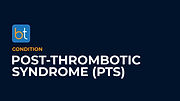BackTable / VI / Article
Tools & Techniques in Iliofemoral Stenting
Manisha Naganatanahalli • Updated Jan 24, 2024 • 231 hits
Percutaneous iliofemoral venous stenting demands precise selection of tools and stents tailored to each clinical scenario. This article explores the strategic approaches to stent placement and sizing in both non-thrombotic and post-thrombotic conditions, aiming to enhance patient outcomes. Meticulous planning and collaboration within the venous community is crucial, especially when addressing challenges posed by existing stents. The use of detailed imaging to ensure accurate stent placement is also a critical aspect of these procedures.
This article features transcripts for the BackTable Podcast. We’ve provided the highlight reel here, and you can listen to the full podcast below.
The BackTable Brief
• Primary tools for complex iliofemoral crossings include Glidewire and stiff support catheters, with more advanced tools and imaging techniques employed for challenging scenarios.
• Telescoping catheters and systems like TriForce are employed for intricate crossings, especially in stent occlusions.
• In non-thrombotic lesions, short stents are generally avoided due to migration risks, with preference for stents placed around the pelvis curve.
• Post-thrombotic lesion stents should overlap above the inguinal ligament and extend to the inflow, avoiding crossing the profunda vein.
• Stent selection involves considering factors like radial force, crush resistance, and flexibility, tailored to each case's specifics.
• For previously stented iliofemoral veins, a detailed plan and community consultation are vital to manage complexities effectively.
• Balloon angioplasty is suggested as a temporary measure in uncertain scenarios, with a focus on avoiding rushed stent deployment.
• Detailed imaging, such as IVUS, is emphasized for accurate stent placement, especially in cases of septations or near the IVC.

Table of Contents
(1) Specialized Tools for Iliofemoral Venous Stenting
(2) Strategic Landing & Sizing of Stents in Iliofemoral Procedures
(3) Addressing Challenges in Secondary Iliofemoral Stenting
Specialized Tools for Iliofemoral Venous Stenting
Specialized tools and methods are essential for crossing during iliofemoral venous stenting, particularly in complex cases like stent occlusions. The primary toolset generally includes a Glidewire and a stiff support catheter. For more challenging crossings, a more sophisticated support system is necessary, with telescoping catheters of various sizes being employed. Tools like the TriForce system and metal cannulas, such as the Chiba needle, are mentioned for their effectiveness in difficult scenarios. However, as complexity increases, so does the reliance on advanced imaging techniques like cone beam and IVUS to ensure precise navigation. When dealing with stent occlusions, the use of transseptal needles, radio frequency wires, and bidirectional sheaths are discussed, each bringing an elevated risk profile that demands careful consideration, especially at high-risk sites like compression areas.
[Dr. Steven Abramowitz]
Workhorse generally is going to be a Glidewire and a stiff support catheter... If I'm working from the pop and I have a 16 or 11 French sheath in there, the next thing is I'm telescoping in along 8, along 10. We'll do that along 6 or like 5... We've used anything from a tip set, metal cannulas like Chiba needle... "Okay, now I'm going to cone beam. Now I'm going to use IVUS. Now I really want to double down on my additional imaging as well."
[Dr. Kush Desai]
...TriForce has taken a pretty central role with the stiff Glidewire in my practice... I think when you start talking about stent occlusions, boy, it's a totally different story... People have used transseptal needles... radio frequency wires... All of those things come with an elevated risk profile... I would say the compression site is where you can't because you'll end up or you could end up in the artery and it could be a potentially catastrophic complication.
One thing I've actually used more recently that's been pretty successful is transseptal sheaths, bidirectional sheaths. Inside of that, it comes with an introducer. Then what I do inside of that is I use a transseptal needle, but not with the needle exposed. The needle is just slightly back inside of the taper dilator, the introducer, but it stiffens the whole thing...
Listen to the Full Podcast
Stay Up To Date
Follow:
Subscribe:
Sign Up:
Strategic Landing & Sizing of Stents in Iliofemoral Procedures
In iliofemoral stenting, the selection of landing zones and stent sizing is critical. For non-thrombotic lesions, short stents are avoided due to migration risks; instead, stents are ideally placed around the curve of the pelvis. For post-thrombotic lesions, overlapping of stents above the inguinal ligament minimizes fracture risks, and stents should extend to the inflow but not across the profunda vein to avoid jail. Sizing strategies differ based on patient anatomy and lesion type. In post-thrombotic cases, contralateral vein dimensions can guide sizing, but inflow considerations may necessitate a smaller stent. Non-thrombotic stenting typically involves sizing to the average diameter of the anchoring segment in the external iliac vein, commonly resulting in 14 or 16 millimeter stents.
[Dr. Kush Desai]
For non-thermobotics, there really is no value in placing a short stent... I personally place it around the curve... Extended around the curve, I find that 120 if I'm doing a NIVL patient is usually Goldilocks just right in terms of length in the majority of patients or longer if you need to.
Post-thrombotics overlap above the inguinal ligament... Then extend to the inflow. If it's post-thrombotic and your common femoral is not in good shape, extend down to the profunda inflow, but not across it... For non-thrombotics, I take the average diameter of the anchoring segment in the EIV... The vast majority of patients, honestly, are going to be a 14 or a 16 millimeter stent.
[Dr. Steven Abramowitz]
... especially for those patients if you're treating somebody with a NIVL, is that you don't want to necessarily size to the most dilated or pre-stenotic dilated segment of vein... focusing not landing that stent in the base of the pelvis... If you bring that patient back ever, or you get a CTD or an MRV, you're not going to see a free-floating vein in a 14-millimeter stent, in a 20-millimeter venous aneurysm. It'll definitely remodel down around whatever structure you put in place.
For post-thrombotic patients... if I assess the inflow, and it looks like if I put a 14-millimeter or 16-millimeter venous stent in there, the inflow's really only going to support a 10 or a 12, I have no problems making it a 10 or a 12-millimeter stent for the entirety of the treated segment.
Addressing Challenges in Secondary Iliofemoral Stenting
Dr. Desai and Dr. Abramowitz elaborate on how they manage iliofemoral venous complications, particularly in patients with prior procedures. The key is a well-thought-out plan. If doubts exist, reaching out to the venous community for guidance is encouraged, as the field is supportive and collaborative. The limitations of working with pre-existing stents are highlighted. For instance, a stent crossing the profunda can lead to complications, limiting future intervention options. It's emphasized that hasty stent deployment, especially without proper imaging or understanding of venous anatomy, can result in difficult-to-correct errors. Balloon angioplasty is suggested as a temporary measure in uncertain scenarios. The importance of using detailed imaging, like IVUS, for accurate stent placement and avoiding rushed decisions due to inexperience, is also underscored.
[Dr. Kush Desai]
I'll say that be sure of your plan. If there's any uncertainties in your plan, I'll tell you that the venous community in my experience is incredibly giving of their time. Just reach out to someone, ask questions. There are no such things as as bad or stupid questions, so to speak. Just ask. The problem is once the prosthetic has been placed, you're committed. I tell this to patients that come for stent re-dos, to me I say, "Look, I'm not working on a blank slate, I'm just not. We're stuck with what you got and let's see if we can fix it." Sometimes you can't, you really can't. Crossing the profunda, jailing it, it's like, "Okay, I'm sorry, I can't fix that."
[Dr. Christopher Beck]
Steve, any advice to those with just not the same high volume that you guys may have?
[Dr. Steven Abramowitz]
I think that if it doesn't look right-- It's not like you have an ischemic leg or someone who's actively hemorrhaging. If it doesn't look like, and you have a question, I completely agree with what Kush said, this community is not cutthroat. No one's out to get you or say, "I got you." Everybody recognizes that all of us had a paucity of venous exposure in our training. Unless you have really focused on making this a large percentage of your practice, you may not see the one in a million, so that don't cross that threshold. The patient's not going to die. You can bring them back for a venogram the next day.
Even if you said, "Geez, I just spent seven and a half hours crossing this thing, I can't believe I'm not going to do something." Balloon it. I promise you, you can bring them back in a few weeks and you'll cross with maybe six and a half hours of time. The real thing is the mistakes that get made are usually because someone felt something wasn't right in their gut, didn't know what they were looking at, and committed the faux pas or the unintentional error. That could be not recognizing that there was a septation in the common femoral.
I've seen the stent getting deployed and all of a sudden the fun is out. Not necessarily recognizing that they're not using IVUS and they're going by bony landmarks, and they're not recognizing how far that their stent has encroached onto the contralateral wall of the IVC. These are all little things, but they all lead to failures and they lead to very challenging failures to address.
Podcast Contributors
Cite This Podcast
BackTable, LLC (Producer). (2023, November 6). Ep. 382 – Iliofemoral Stenting: Decision-Making & Best Practices Explored [Audio podcast]. Retrieved from https://www.backtable.com
Disclaimer: The Materials available on BackTable.com are for informational and educational purposes only and are not a substitute for the professional judgment of a healthcare professional in diagnosing and treating patients. The opinions expressed by participants of the BackTable Podcast belong solely to the participants, and do not necessarily reflect the views of BackTable.













